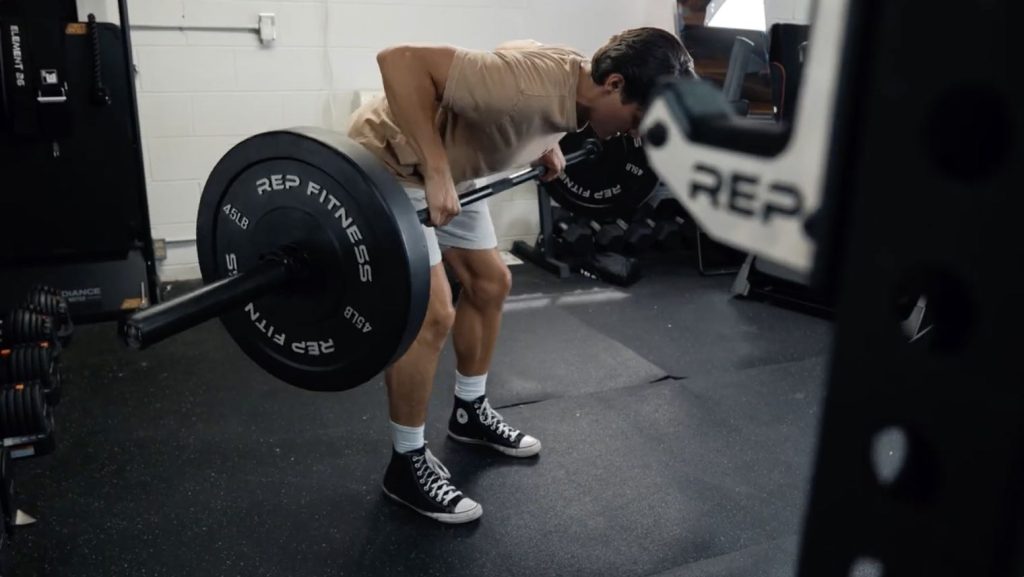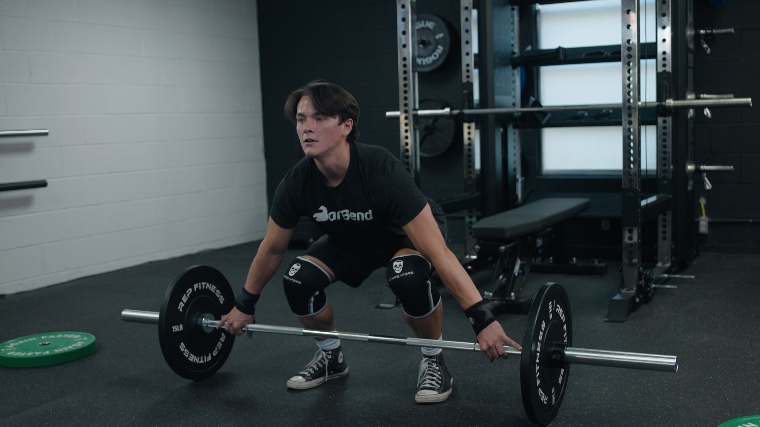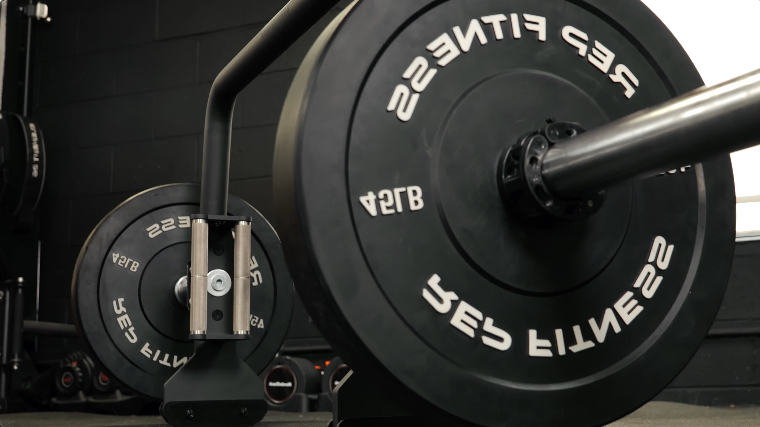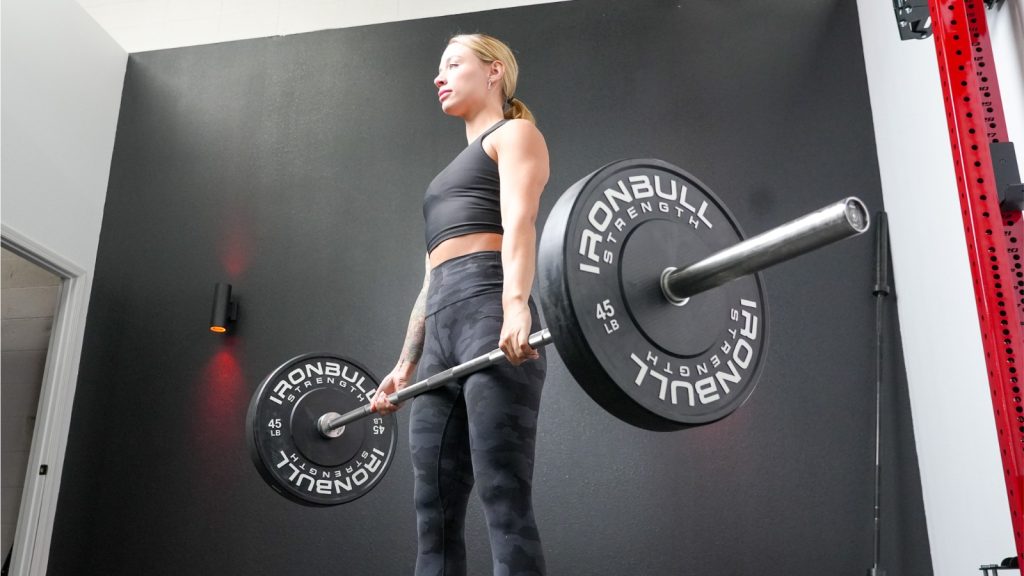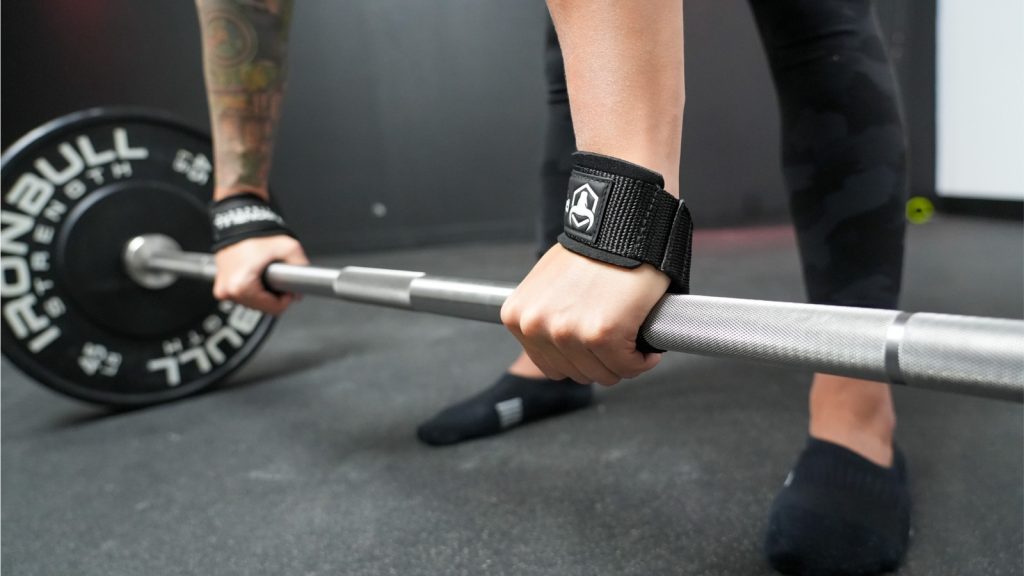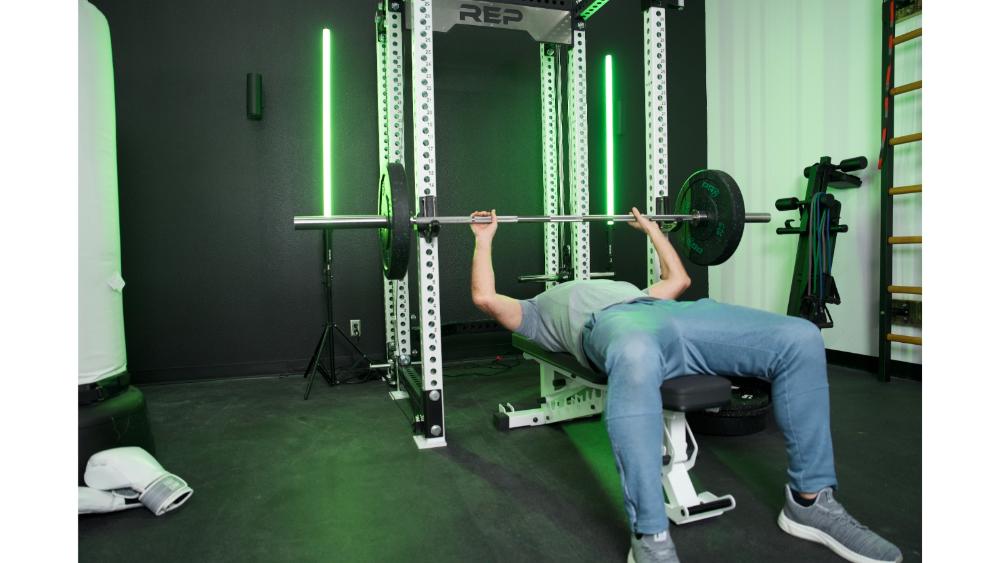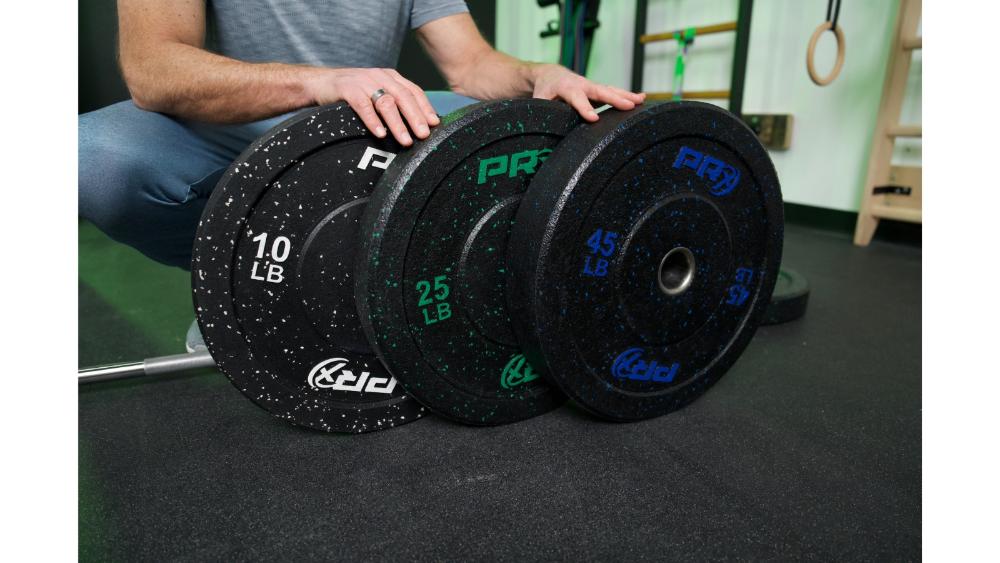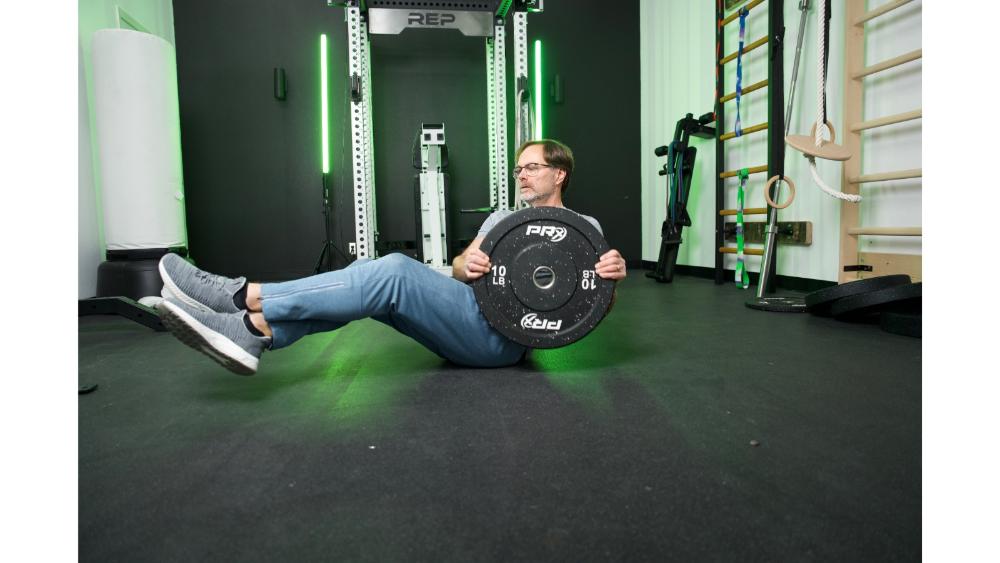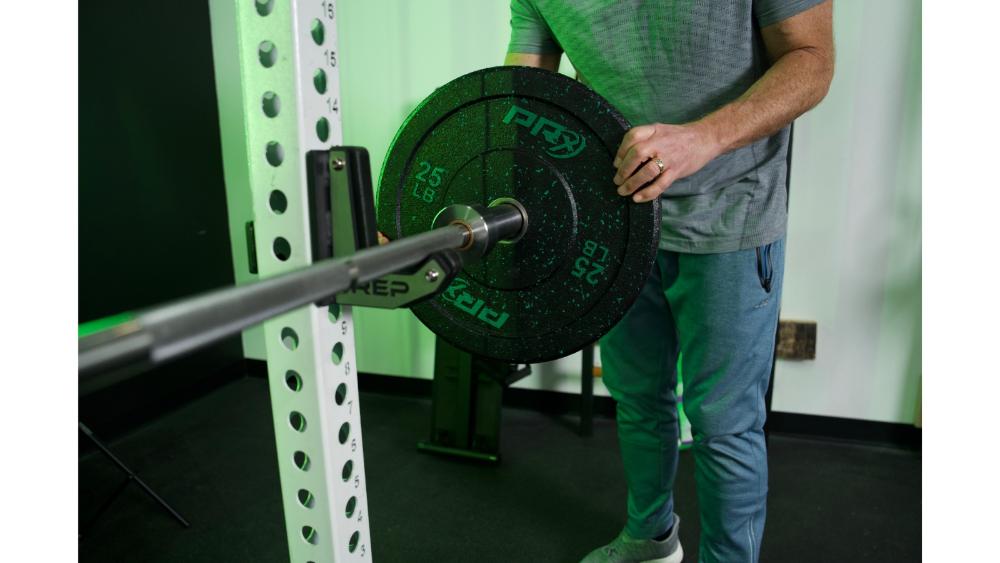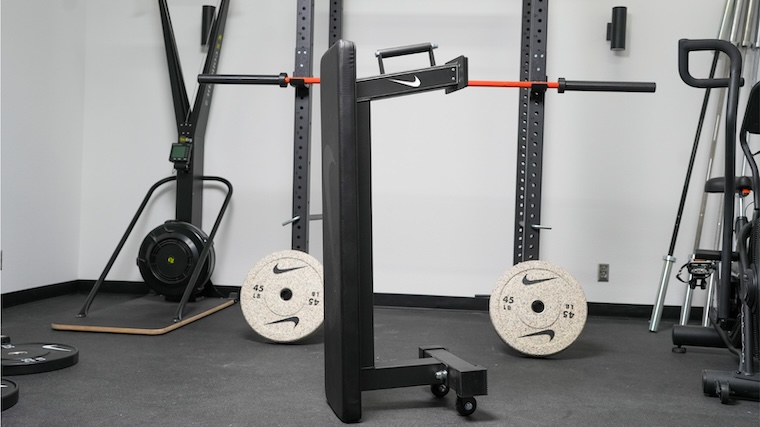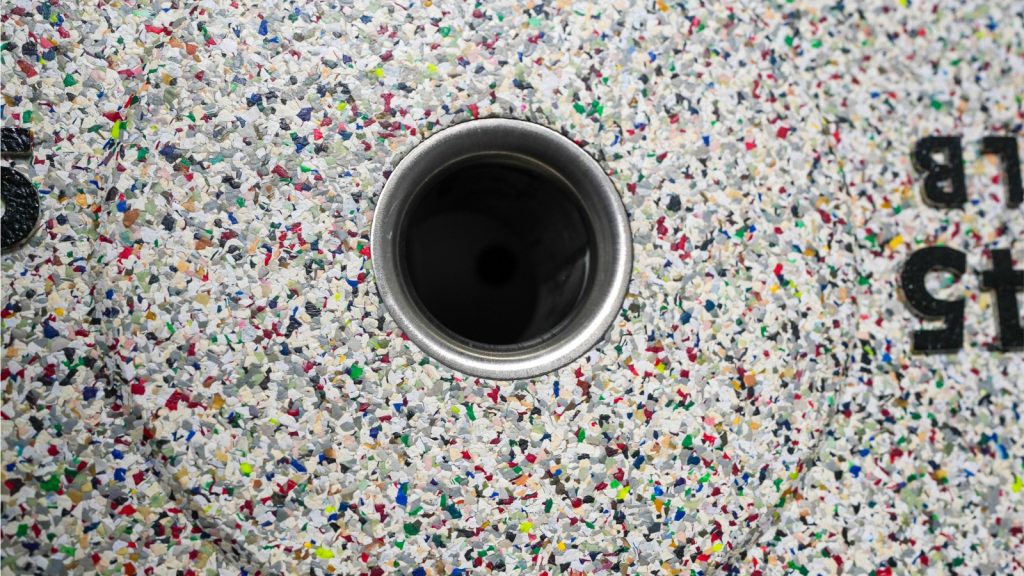Weight plates may not be as flashy as some of the best cable machines or smart gyms. But paired with a good Olympic barbell, they’re all you need to get an excellent total-body workout, no matter your fitness level. The exercise possibilities are endless and weight plates can help you progress over time, unlike a weight-limited machine.
There is something out there for everyone, from the best bumper plates to calibrated steel varieties. But with technology constantly evolving and more competition entering the market, there’s a seemingly endless list of products you can buy. Our team of Barbend experts has done the heavy lifting (pun intended) for you by researching and testing more than a dozen of the best weight plates from brands like REP Fitness, Titan, Nike, and Rogue. Browse our top picks and find the best set for your home gym.
Best Weight Plates for 2025
- Best Weight Plates Overall: REP Fitness Black Bumper Plates
- Best Urethane Plates: Titan Fitness LB Color Urethane Bumper Plates
- Best Weight Plate Sets: Fringe Sport Black Bumper Plate Sets
- Best Durable Bumper Plates: Iron Bull Strength BP Plates
- Best Rubber Weight Plates (Bumper Plates): PRx Crumb Rubber Bumper Plate
- Best Weight Plates for CrossFit: Nike Strength Rubber Bumper Plates (Grind)
- Best Weight Plates for Powerlifting: Rogue Calibrated KG Steel Plates
- Best Budget Weight Plates: CAP Barbell Olympic Grip Plates
- Best Weight Plates for Competition: Rogue Fitness Color KG Training Plates
Best Weight Plates Video Review
BarBend expert tester and certified nutrition coach Jake Herod shares our picks for the best weight plates. Tag along as we dive into the details of each weight plate, from the premium materials used to the types of workouts for which they’re best suited.
Best Weight Plates Overall: REP Fitness Black Bumper Plates
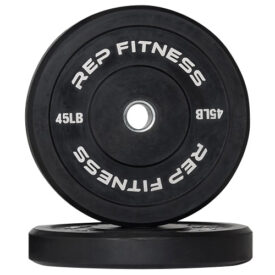
These durable black bumper plates have steel inserts and low-bounce virgin rubber that may help reduce noise when dropped. They're ideal for traditional lifts, cross-training, and even Olympic Lifts.
Specs
- Material: Virgin rubber
- Weights Available: 10lb, 15lb, 25lb, 35lb, 45lb, 160lb set, 190lb set, 230lb set, 250lb set, 260lb set, 340lb set
- Price Range: $69.99 to $209.99 per pair
- Warranty: 6 months on 10lb and 15lb, 3 years on 25lb, 35lb, 45lb, and 55lb
Weight plates aren’t the most high-tech piece of gym equipment. But that doesn’t mean you should pick just any old pair off the internet. If you want to invest in a high-quality piece of equipment that can withstand years of use and plenty of drops, we’ve found the ideal plate: REP Fitness’ Black Bumper Plates.
“They’re super durable and can withstand all the punishment you could ask for in a pair of bumper plates,” says our lead product tester Jake Herod, who gave them a 5 out of 5 for durability. REP’s plates have been factory tested to withstand more than 12,000 drops from eight feet high with zero damage to the plates. And we also love that they don’t bounce much, either. Considering you’re probably adding to your home gym equipment, this is a must-have feature to protect your floors.
As we took these plates through a variety of exercises, including deadlifts, back/front squats, bench presses, and cleans, we noticed a few things straight off the bat. Ranging from $69.99 to $209.99 per pair, REP’s bumpers are pretty meticulously built. For one, the 10-pound plates are an inch thick (most others less than an inch) to reduce the likelihood of bending with use. Also, the 45-pound plates are thinner than most (about 2.8 inches thick) to accommodate more loading on your barbell.
On the downside, these bumper plates don’t feature a handle, according to Herod. “A lot of the time, you’ll find bumper plates have a handle, and that’s really helpful for loading and unloading, as well as specific exercises, like a front shoulder raise,” he says.
We also love the sleek look of these bumpers. “It’s a really common phrase in the sports world that if you look good, you’ll feel good and then you’ll play good,” Jake Herod, NASM-CNC says, giving the design a 5 out of 5. “That’s no exception here — these weights look awesome.”
These plates don’t have any handles, though, which some athletes may prefer for easy maneuvering. In that case, we recommend CAP Barbell’s Olympic Grip plates, which are much easier to carry.
Read our full review of REP Fitness Black Bumper Plates.
Best Urethane Plates: Titan Fitness LB Color Urethane Bumper Plates
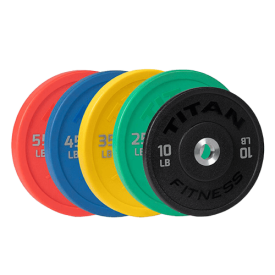
These bumper plates are made with extremely durably urethane, which won't bend or crack with use. The color-coding also makes it quicker to select your desired weight as you switch from one exercise to the next.
Specs
- Material: Urethane rubber
- Weights Available: 10lb, 15lb, 25lb, 35lb, 45lb, 55lb, 340lb set
- Price Range: $64.99 to $449.99
- Warranty: 1 year
Although most bumper plates may look the same, if you actually feel the coating, they’re not all identical. Ranging from $59.97 to $159.97 per single plate, these are built with urethane rubber, an ultra-durable material. To the touch, they’ll feel harder than a rubber plate (like REP’s pick above) but not fully stiff like plastic.
As a competitive weightlifter myself, I needed some really durable plates because I own a weightlifting gym, and our plates get dropped a lot from overhead during snatches and clean-and-jerks. The Titan urethane plates have been a fantastic solution because urethane is so much more durable than your typical rubber or crumb rubber bumper. When it comes to material and durability, I give these a 5 out of 5 rating.
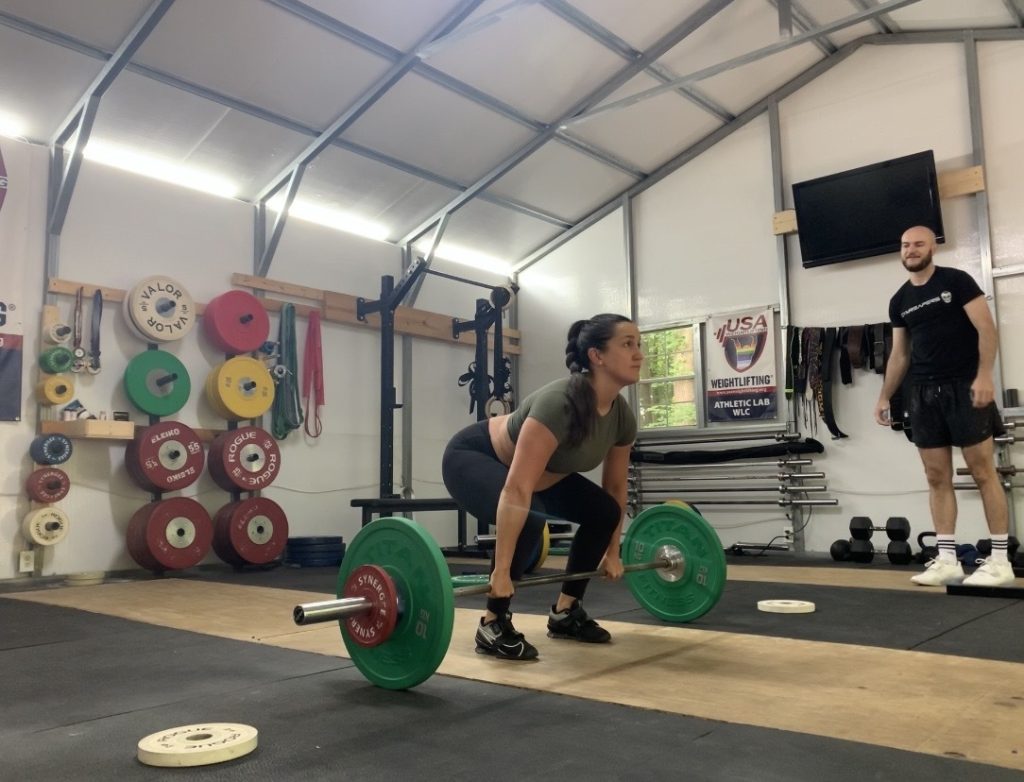
Urethane isn’t necessarily better or worse than any other plate materials — it’s just different. And it may be ideal for your purposes! Urethane is denser than rubber, so it won’t bounce nearly as much as a rubber plate. Athletes training at home may love this because it’s safer for your floors and minimizes noise. I have owned these plates for more than a year. They get used almost every day by weightlifters for squats, deadlifts, Olympic lifts — you name it — and we haven’t had one issue with floor damage or noise.
Despite the advantages of the material, one of our testers didn’t totally love the structural details, giving the design a 3.5 out of 5 rating. “The edges have a small lip and flat design, which I think is hard to pick up,” according to our tester. For those who want some more grip, our tester recommends trying Eleiko’s rubber plates or the Rogue Fitness training plates.
The 5-kilogram plates are a little weird for two reasons. They’re smaller in diameter than standard plate size but not quite as small as a change plate either. I believe it’s because if they stretched the lighter plate bigger, the urethane would be too thin and lose durability. The 5-kilo weights are also black, whereas typically in weightlifting, these plates are white (and smaller).
We do like that these are color-coded for easy selection. However, they are a little pricey, earning the cast a 4 out of 5. These start at around $64.99 per pair, which is a little costly for a 10-pound pair.
Best Weight Plate Sets: Fringe Sport Black Bumper Plate Sets
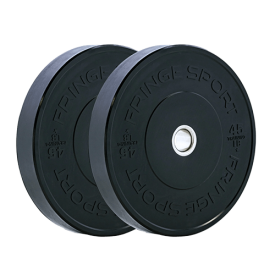
Fringe Sport's Black Bumper Plates come in small-increment sets, so you can find your ideal combination of plates. Plus, all of the plates have a warranty, should you have any non-user-related damage.
Specs
- Material: Virgin rubber
- Weights Available: 100lb set, 160lb set, 170lb set, 190lb set, 230lb set, 250lb set, 260lb set, 370lb set, 460lb set
- Price Range: $270 to $950 per set
- Warranty: 1 year on 10lb and 15lb, 3 years on 25lb, 35lb, 45lb, and 55lb
When you’re outfitting your entire home gym, buying individual weight plate pairs isn’t the most efficient or cost-friendly way to go. But when you buy an entire set of plates, you can get all your necessities at once, plus save a little cash, too.
While many other plate brands offer set options, none are quite as versatile as Fringe Sport. Their sets include:
- 100lb: 10lb/15lb/25lb for $270
- 160lb: 10lb/25lb/45lb for $369
- 170lb: 15lb/25lb/45lb for $399
- 190lb: 10lb/15lb/25lb/45lb for $450
- 230lb: 10lb/25lb/35lb/45lb for $515
- 250lb: 10lb/25lb/45lb/45lb for $559
- 260lb: 10lb/15lb/25lb/34lb/45lb for $595
- 370lb: 10lb/15lb/25lb/45lb/45lb/45lb for $800
- 370lb: 10lb/15lb/25lb/35lb/45lb/55lb for $800
- 460lb: 10lb/15lb/25lb/45lb/45lb/45lb/45lb for $950
As you can see, there’s seemingly endless combinations of weights in Fringe Sport’s sets. Plus, each individual weight comes in a pair, not a single plate. However, you want to choose carefully. For instance, if you own or plan to buy small change plates, you may not need some of the in-between weights, like 15-pound plates. So, think critically about your purposes before you buy.
Another little-known fact: Rubber plates stink — literally. The material can actually create a pretty strong odor when first unboxed. But Fringe Sport’s virgin rubber is brand-new, meaning it has less impurities and foreign substances, which tend to create the unwanted odor you find with most plates. “I didn’t notice any odor with these at all, though I know it’s pretty common,” our tester said.
Where durability is concerned, we gave these plates a 5 out of 5. These are perfectly safe to drop during your Olympic lifts and you shouldn’t expect any issues with damage. These also have a slim, sleek profile. However, we had to give the design a 4 out of 5, as the lip is pretty low profile, making grip a little more challenging.
Fringe Sport tested these plates with a durometer, too, finding they’re actually pretty stiff with a low bounce. The 10-pound and 15-pound weights were a 90 sHA reading, while the other sizes were 85 sHA. “These don’t have as much bounce as other plates we’ve tested,” our tester said. “They’re better for athletes who don’t need to prioritize this characteristic too much.”
While this is ideal for at-home gyms where protecting your floors is crucial, it may not be the best for athletes who prefer a little bounce. For athletes who want good bounce with their plates, we recommend PRx’s crumb rubber plates.
Most Durable Bumper Plates: Iron Bull Strength BP Plates
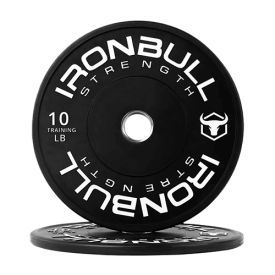
Iron Bull's virgin rubber bumper plates are durable and can withstand plenty of drops with zero cracks or scratches. These are available as single plates or in multiple sets if you're looking to set up a new home gym.
Specs
- Material: Virgin rubber
- Weights Available: 10lb, 15lb, 25lb, 35lb, 45lb, 160lb set, 190lb set, 230lb set, 260lb set, 340lb set
- Price Range: $65 to $210 per pair
- Warranty: N/A
If you like the satisfying feeling and sound of dropping your bar after a heavy set of deadlifts, Iron Bull’s BP Plates may be your best bet. These have been tested to endure tens of thousands of drops with no damage and after some personal testing, we think they’re up to snuff.
While we hunted for a pair of durable plates, personal experience was key. Our tester took these plates through two separate workouts, which included full cleans, hang cleans, squats, and deadlifts. In other words, plenty of drops from different heights. “The plates landed with no scratches, dents or cracks,” our tester says, giving the durability a 5 out of 5 rating.
We also noticed very minimal bounce when dropped, which we prefer, as we love to keep our testing garage in tip-top shape. However, we know that a few (albeit diligent) test runs can only tell so much about long-term durability. But Iron Bull put these through more than 10,000 drops from an eight-foot height and still saw no damage.
“These aren’t extremely loud, either” according to our tester, who gave the noise level a 5 out of 5 rating. “Of course they’re not going to hit the ground quietly but nothing out of the ordinary. My dog didn’t even raise his head from the ground when I dropped my barbell time after time.”
When comparing the rubber coating and stainless steel inserts to a few other plates, like the PRx Specked Bumper Plates, our tester thought Iron Bull’s quality was hard to match. We also liked the $65 to $210 per pair price range, especially considering the durability, earning the cost a 4.5 out of 5. However, unlike most competitors, Iron Bull doesn’t seem to offer a warranty on its bumper plates, which isn’t ideal.
The small lip on the outer edge of the plate was a plus, though. “That design makes the plate much easier to pick up off the ground,” our tester noted. But for athletes who want a flatter design, we suggest you try out the Titan Fitness Urethane Plates.
Best Rubber Weight Plates (Bumper Plates): PRx Crumb Rubber Bumper Plate
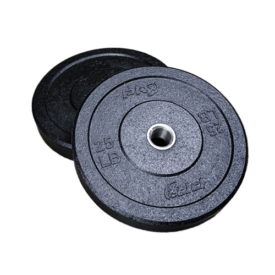
These bumper plates from PRx are made from 100-percent recycled rubber and designed to stand up to repeated drops, session after session. Each is finished with a stainless steel insert and has an embossed PRx logo and weight on each side. Pick them up in pairs or 160-pound and 260-pound bundles.
Specs
- Material: Crumb rubber
- Weights Available: 10lb, 15lb, 25lb, 35lb, 45lb, 160lb set, 260lb set
- Price Range: $59.99 to $199.99 per pair
- Warranty: N/A
Most consumer industries can be pretty wasteful, fitness included. So, opting for a recycled rubber plate, like PRx’s Crumb Rubber Plates can be an environmentally-friendly choice.
The recycled rubber isn’t only positive for the environment, it held up well after undergoing several different testing exercises and drops. “The material is durable and absorbs impact well,” our tester says, giving these plates a 4 out of 5 for durability. “However, you don’t want to drop the 10- or 15-pound plates because it can damage the insert and the warranty won’t work anymore.”
PRx offers a 90-day warranty on the 10- and 15-pound plates and a two-year warranty on the others. Our tester said their plates were delivered “in a well-packed cardboard box with foam, which stayed intact during shipping. All the products were in pristine condition.” However, the return policy isn’t too lenient, which may be good to know before you buy. If 30 days go by after your purchase is delivered, you can’t return the plates — no exceptions.
Crumb rubber plates are probably best for CrossFitters, as they have a pretty high bounce compared to stiffer plates. So, if you’re a powerlifter training for a competition, you may want to browse some of our other options, like Iron Bull’s Strength BP Rubber Plates.
Our tester just loved the flakey, speckled look of the plates themselves, giving them a 5 out of 5 for aesthetics. “These can be a fun addition to any home gym, thanks to the appearance,” they say.
As they’re made with recycled materials, these plates are also cheaper than most competitors. The 10-pound plates are only $59.99 per pair, whereas others sit at $65 and up. Several customer reviews also point out the speedy delivery time, noting it takes only a few days until they arrive. Unfortunately, PRx does not have warranties for its weight plates, so you may have to contact customer service if you experience issues.
Best Weight Plates for CrossFit: Nike Strength Rubber Bumper Plates (Grind)
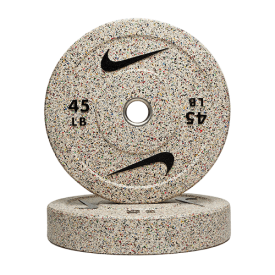
These Nike plates are made with recycled rubber from Nike's manufacturing scrap, so they're environmentally-friendly. They also have a thick design with plenty of durability — just don't leave them out in the sun, as they may yellow.
Specs
- Material: Recycled rubber
- Weights Available: 10lb, 15lb, 25lb, 35lb, 45lb
- Price Range: $38 to $110 per single plate
- Warranty: N/A
Nike has finally entered the strength equipment arena and their Grind Rubber Bumper Plates are definitely worth considering, especially if you’re a CrossFit athlete. From their durable construction to the thicker design, they make a good fit for just about any WOD. We know this because our product tester used them multiple times across various exercises, including deadlifts, hang cleans, thrusters, and squats, giving them a 5 out of 5 for overall durability.
“These can withstand plenty of use,” according to our product tester. “I can’t imagine them breaking down even after a bunch of tough CrossFit workouts.”
These plates are thicker than most others, which is suitable for CrossFit, considering how many times a barbell gets dropped in a single workout. The 10-pound plates are thicker than most others at about 1.10 inches thick (typically, they’re under an inch).
These plates also load “really smoothly,” our tester said. “They slid on the bar easily but didn’t budge when I dropped them from over my head.” When it comes to loading, we gave these a 5 out of 5, which is helpful as you’re switching quickly from one exercise to the next.
Nike’s plates are crumb bumper plates, which means they’re made with recycled rubber. Generally, recycled rubber plates may bounce a little higher than virgin rubber, according to Jake Herod, NASM-CNC. However, our other product tester gave these specific plates a 4.5 out of 5 for bounce, saying, “they have very little overall bounce. I’d recommend these plates for Olympic lifting and the big three lifts.”
For athletes who prefer a little more bounce to their plates, we recommend the PRx Crumb Rubber bumper plates. Crumb rubber tends to have way more bounce to it than other weight plate materials.
The company makes its Grind plates with 99 percent recycled rubber from Nike’s manufacturing scrap, which we see as a big bonus, as we love a win for the environment. And when it comes to aesthetics, our tester said they “love the look of the multicolored recycled bits.” Unfortunately, though, the color can yellow over time, especially if you leave your plates in the sun.
We do wish Nike offered the Grind bumper plates in sets, though, or offered a warranty. Right now, they’re only sold as single plates, which isn’t always convenient if you’re looking to deck out your whole gym. However, they’re pretty competitively priced at $38 to $110 per single plate, according to Herod.
Best Weight Plates for Powerlifting: Rogue Calibrated KG Steel Plates
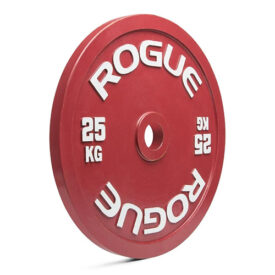
A staple in powerlifting gyms and competitions, the Rogue Calibrated KG Steel plates are IPF approved and calibrated to be insanely dialed-in to their stated weight. These plates are extremely high quality and their weight is measured in kilograms.
Specs
- Material: Steel
- Weights Available: 0.25kg, 0.5kg, 1.25kg, 2.5kg, 5kg, 10kg, 15kg, 20kg, 25kg, 50kg, 150kg set, 459kg set
- Price Range: $30 to $570 per pair
- Warranty: N/A
For competitive powerlifters, you need a set of plates that meet competition standards. These IPF-approved Rogue plates certainly fit the bill.
Rogue’s plates are designed with the powerlifting athlete in mind. They’re machine-calibrated for accuracy within plus or minus 10 grams of the written weight, making these the most accurate plates on this list. “They’re [also] very thin,” our tester says, giving the design a 4 out of 5. “So, you can stack plenty of plates onto the bar at once.”
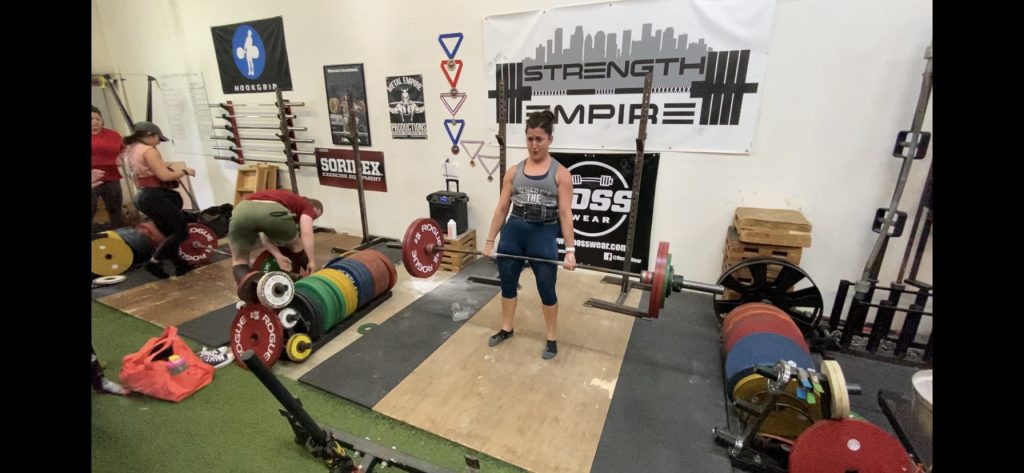
Whereas most other picks on this list are rubber, these are steel, so you actually shouldn’t be dropping these after a lift. Steel plates aren’t as versatile as other weight plates, so we recommend REP Fitness’ Urethane Black Bumper plates if you want more bounce.
After taking these through squats, deadlifts, and bench press, our tester gave these a 4 out of 5 for durability, as they’re “cast iron, not ductile iron, which is a less durable material,” he says. He also noticed some issues with the paint, which took away from a perfect rating (more on that below).
These steel plates come in a wide variety of weight options, giving you more flexibility in your loads than standard bumper plates. There are also two set options, however it’s quite a big jump from a 150-kg set and a 459-kg set. So, if your needs land somewhere in the middle, you have to buy individual pairs, which isn’t too convenient.
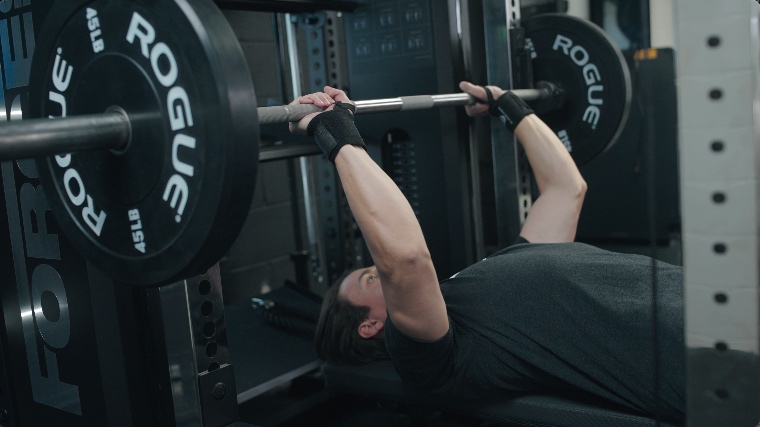
While the actual weight is high-quality and extremely accurate, our tester wasn’t a fan of the paint. “There were some chips right out of the box,” he says. “They chip very quickly, but I think chipped plates are a patina and less of an issue, so over time, they chip and fade but personally, I like that look,” he says. So, if pristine plates are a priority, these may not be the best bet.
Unfortunately, if you have any issues with the plates, aside from use-related wear, Rogue doesn’t seem to extend warranties on this product. It’s best to contact customer service, as the company seems to handle these issues on a case-by-case basis.
Best Budget Weight Plates: CAP Barbell Olympic Grip Plates
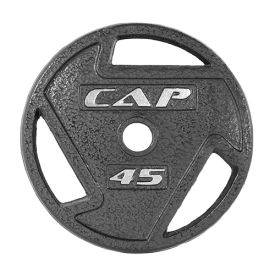
These cast-iron weight plates are plenty durable and considering they're available on Amazon Prime, you can get them delivered in just a matter of days. However, you shouldn't be dropping these on the floor, as they can cause damage.
Specs
- Material: Cast Iron
- Weights Available: 2.5lb set of six, 5lb set of four, 10lb set of four, 25lb single, 35lb single, 45lb single
- Price Range: $20.99 to $62.99
- Warranty: 30-day manufacturer warranty from date of sale in original packaging
If you’re shopping on a budget, CAP Barbell plates have you covered. These cast iron weight plates are available on Amazon Prime and range in price from $20.99 to $62.99, which is among the cheapest options on this list, earning a 5 out of 5 for cost.
The solid cast iron material here is built to last for years and won’t chip or dent. You also don’t have to worry about the thinner plates bending, either, as may happen with thinner, lighter bumpers, too. Compared to some bumper plates, these definitely deserve a 5 out of 5 for durability.
With that said, cast-iron plates aren’t suitable for all athletes. These have absolutely zero bounce and shouldn’t be dropped at all, as they can damage your floors. Cast iron plates don’t have any rubbery protection, so the damage to your home (or foot, if dropped) can be instant. If you want plates that can be dropped, we recommend Nike’s Rubber Bumper Plates.
They’re also not as perfectly calibrated as other products. One customer review noted that a few of their 10-pound plates actually measured 10.5 pounds. While this isn’t a huge discrepancy, it may be important to some athletes.
Personally, I recommend buying these as change plates to go along with some bumpers. At my own home gym, I mainly use bumper plates and tack on a few five-pound CAP plates here and there. That way, I can still drop my barbell after a lift without damaging my garage floor because the cast iron plates never actually touch the ground. I’d give them a 3 out of 5 for versatility but 4.5 out of 5 for quality, especially for a budget-friendly Amazon find.
CAP Barbell’s plates have handles along the sides, so you can maneuver the weights easily as you load more onto your barbell. And these are thinner than most bumper plates, too, so you can load plenty of weight without taking up too much space.
If you’re not satisfied with your plates, the company does order a 30-day warranty but the weights need to be in the original packaging, so don’t throw the box out right away!
Best Weight Plates for Competition: Rogue Color KG Training Plates
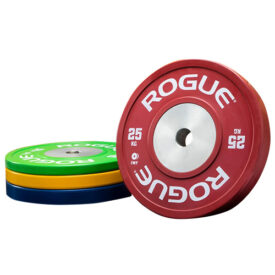
Competitive weightlifters will appreciate the details of these plates. They're dialed in to be within 15 grams of the stated weight, are ultra durable, and have minimal bounce so you don't have to worry about where the weight goes after you hit that big lift in training.
Specs
- Material: Rubber
- Weights Available: 25lb, 35lb, 45lb, 55lb, 210lb set, 300lb set, 320lb set
- Price Range: $205 to $375 per pair
- Warranty: N/A
When you play any sport, you want to mimic your competition setting as much as possible. And Olympic weightlifting is no exception. So, when you’re practicing your lifts at home, competition weight plates are a must-have. Enter, Rogue’s Color KG Training Plates.
Rogue’s plates are IWF-approved but as they’re only training plates, you get all the benefits of competition standards without paying the high price usually associated with competition plates. Whereas most other plates have a weight tolerance of plus or minus one percent, these are even more specific, guaranteeing plus or minus 15 grams of the plate’s written weight.
As you’ll notice, the weights are written on the plates in kilograms, which is also in line with what you can expect at a competition. But to make your life easier, Rogue does make these plates in pounds as well. Regardless of the writing, the color-coding makes finding your desired plate super simple, earning the design a 5 out of 5.
“I’ve used these plates for nearly six years and they’ve held up incredibly well,” our tester said, giving the durability a 5 out of 5. “They’re incredibly high quality and they have a lower bounce, which some athletes may like.”
Rogue tested these with a durometer (a device that measures the hardness of a material) to make sure you get as little bounce as possible. Durometers measure on a scale of 70 to 90, 70 being super soft, while 90 is very hard. Considering these plates are an 86, you don’t have to worry about them bouncing back up when dropped.
These do have a pretty high price tag, which can be a turnoff for some customers, earning a 3 out of 5 for cost. The 25-pound plate pair costs $205, whereas others price this weight at around $100 to $150. For those who want a more budget-friendly bumper option, we recommend PRx’s Crumb Rubber Bumper Plates.
“These are a little slick, which I’d recommend you keep in mind,” our tester said. “I’ve definitely noticed people have a little trouble picking them up off the ground at my home gym.”
Rogue also doesn’t offer any warranty information on weight plates one either the product page or warranty page. But based off customer feedback, it seems to be a case-by-case basis.
How We Chose and Tested the Best Weight Plates
There’s certainly no shortage of Olympic weight plates on the market. Thankfully, we’ve taken a lot of that burden off your plate and compiled this list that has options for a range of needs. When making this list and testing plates, we took the following factors into account.
- Price: The price of weight plates can range from around $30 for a light and cost-effective plate to thousands of dollars for a competition set of calibrated discs approved by a governing body or federation. We considered the price against the actual value the plates provide. For the more expensive plates, we made sure they had stand-out factors, like IPF-approval, impressive weight tolerance, and good durometer measurements.
- Durability: “Weight plates are designed to be picked up and then put down…sometimes none-too-gently,” explains Alex Polish, a certified personal trainer and a BarBend editorial team member. “Their job is literally to be dropped onto the ground after a heavy set (not with a back squat, hopefully: we’re thinking about deadlifts and Olympic lifts here). So, you want the most durable plates you can afford.” That’s why we put these plates through countless drop tests and workouts to see how they actually perform in action. We selected products that held up with no cracks, dents, or scratches.
- Material: There are several different common materials for quality plates, including crumb rubber, virgin rubber, cast iron, and steel. No one material is necessarily better than the other but they serve different purposes for different athletes. “CrossFitters and weightlifters will generally need rubber plates to withstand all those drops, whereas steel, calibrated plates will suit a powerlifter better. You may also want to consider the environmental impact of the materials and opt for something recycled.”
- Weight Tolerance: The most reputable brands and products list a weight tolerance. That describes the deviation you can expect to see from the written weight of the plate. For instance, most commonly, you may see a weight tolerance of plus or minus one percent. So, for a 45-pound plate, the true weight of the product will be plus or minus one percent of 45 (about 0.45 pounds). For most athletes, a plus or minus one percent tolerance is perfectly fine. However, competitive athletes need more precision.
- Bounce Height: Different bounce heights are better suited to different athletes and fitness goals. Some may like a higher bounce as it can be easier to move through high-rep sets of exercises like deadlifts, for instance. Other athletes may be training on sensitive floors and prefer as little bounce as possible. We put these plates through plenty of exercises and drops to get an accurate idea of how high or low they bounce. We also made sure to get an idea of the different plates’ durometer readings (when available).
- Purchase Options: You can buy plates a bunch of different ways. You can buy them as singles, pairs, or in a set. Some readers may just need a single 10-pound plate, whereas others want to deck out their entire home gym with multiple sets. So, we tried to provide as much variety as possible. We also know shipping can rack up quite a bit of money, so we emphasized products that offer free shipping, too.
Benefits of Weight Plates
If you’re ready to progress from dumbbell squats to a barbell or just want to tack more weight onto your favorite exercise, you’re going to need some weight plates. Not only do they help you progress, but plates are extremely versatile and can save a ton of space, compared to weight machines.
- Versatility: Weight plates can be used for nearly any exercise you can think of — and they don’t need to be loaded onto a barbell exclusively. Weight plates can even be used by themselves or attached to other pieces of equipment as resistance, such as ab-rollers and plate-loaded cable machines.
- Room to Progress: Varying resistance using weight plates is extremely easy, even easier than using dumbbells or kettlebells. All you have to do is add or remove plates of different weights. If you want to progress slowly through strength training, there are change plates down to as small as a quarter of a pound that you can purchase. “Don’t forget about change plates when it comes to progressive overload,” encourages Alex Polish, a certified personal trainer and BarBend editorial team member. “These little plates may be less sexy to buy, but the investment will be worth it when you’re ready to really train to hit a new one-rep max.”
- Space Savings: Weight plates do need some space, especially if you have a full set and a weight rack. You can save plenty of space by laying your plates flat or leaning them up against the wall, though. And even a full weight rack generally takes up way less space than a full dumbbell set or weight machine.
How Much Do Weight Plates Cost?
Weight plates, like weight benches and barbells, vary in cost based on their material, whether they’re competition approved, how much the plates weigh, and many other factors. Weight plates range widely in cost compared to other types of gym equipment, starting around $30 for a light and non-specialized plate and increasing to nearly $3,000 for a full competition set of calibrated discs.
| Best Weight Plates Overall | REP Fitness Black Bumper Plates | Pairs from $99.99 to $209 and sets from $368.99 to $746.99 |
| Best Urethane Plates | Titan Fitness LB Color Urethane Bumper Plates | Pairs from $59.97 to $159.97 and sets for $1,014.97 |
| Best Weight Plate Sets | Fringe Sport Black Bumper Plate Sets | Sets from $270 to $950 |
| Most Durable Bumper Plates | Iron Bull Strength BP Plates | Pairs from $65 to $210 and sets from $375 to $765 |
| Best Rubber Weight Plates (Bumper Plates) | PRx Crumb Rubber Plate | Pairs from $59.99 to $199.99 and sets from $369 to $599 |
| Best Weight Plates for CrossFit | Nike Strength Rubber Bumper Plates (Grind) | Single plates from $38 to $110 |
| Best Weight Plates for Powerlifting | Rogue Calibrated KG Steel Plates | Pairs from $114 to $303 and sets from $1,087 to $2,937 with change plate pairs from $31 to $72 |
| Best Budget Weight Plates | CAP Barbell Olympic Grip Plates | Individual plates from $34.02 to $62.99 and sets from $20.99 to $44.93 |
| Best Weight Plates for Competition | Rogue Color KG Training Plates | Pairs from $191 to $479 and sets from $797 to $1,241 |
What to Consider Before Buying Weight Plates
Bumper plates, cast iron plates, metal plates, handles or no handles? There are a lot of choices to make when purchasing something as simple as weights. Here are some things you’ll want to consider when browsing different types of weight plates:
Your Training Priorities
If you’re an Olympic Weightlifter or a CrossFitter, you’ll need bumper plates. It’s that simple. For everyone else, you have many more options available. Powerlifters, bodybuilders, or casual lifters can all get away with using whatever plates they want so long as they aren’t slamming bars to the ground.
This means you can potentially save a lot of money, though there are also plenty of high end traditional plates if you’re looking to splurge or need a top-of-the-line product to train for competition.
Your Budget
Generally bumper plates are more expensive than traditional plates, although this isn’t always the case. Certain features like urethane coverings or certification by a sport federation will mean that cast iron plates can be just as costly, if not more expensive, than a similar bumper plate. Our advice is generally to aim for the mid-range and consider your needs. You get great quality here, but don’t end up paying through the nose for features that you don’t actually need.
Durability
None of the plates on this list should have any issues with durability unless you ignore any of the company’s recommendations. Dropping cast iron plates from an overhead press or leaving a set of metal plates outside to face the elements would be prime examples of neglect. That being said, there are a wide range of durable options available, so if you plan on (literally) throwing your weight around and don’t want to worry about your purchase surviving, we’d recommend spending more for an extra durable option.
Handles
Handles usually aren’t available on bumper plates, so if you’re partial to them, you’ll probably end up going with traditional weight plates. Handles can make loading and unloading your bar much more convenient and some consider them essential to save time and effort. This will restrict your choices, but if it’s a priority for you, the options with handles on this list are reliable and high-quality choices.
Colors
You want neon pink plates with a bright green logo? It can be done. There are now plates available in every color under the sun. You’ll pay extra for this, of course, so those with a more restrictive budget should stick to black and make the most of other features.
Aside from customization, Olympic bumper plates are often color-coded for competition; if you compete in powerlifting or weightlifting, you’ll see that the reds are always 25-kilo plates, the blues are always 20-kilo plates, and so on. Even the fractional plates are colored uniformly across the sports.
Common Materials Used In Weight Plates
Despite the variety in shapes of plates, the materials used to manufacture them won’t change that much. Here’s an overview of the main options.
Cast Iron
Pretty easy to understand here, many plates are simply made from iron cast into a solid block. These metal weights are usually then coated with either rubber or urethane, or sometimes plated with another rust-resistant metal. These plates are going to be the cheapest option generally.
Steel
Steel plates are inherently more durable than iron, and can be one of multiple different alloys. Resistant to rust, they can, however, be more brittle depending on the carbon content and will be more expensive than cast iron options.
Urethane
Urethane is the most durable — and also the most expensive — option for covering the outside of weight plates. It’s very resistant to wear and tear and is also great if you want to customize your plates. Companies can add letters, numbers, and even logos if they wish.
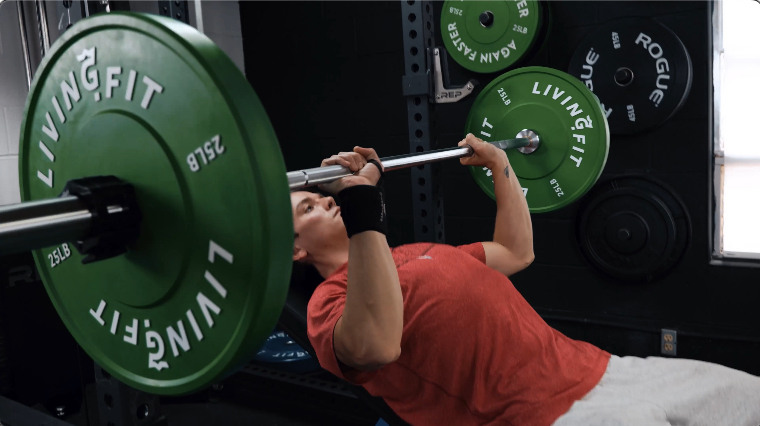
Generally urethane is the go-to for commercial gyms where equipment will be heavily used, but isn’t as necessary for home gyms or recreational lifters looking to build out their bonus rooms.
Rubber
Rubber is cheaper and less durable than urethane, but for the average lifter, you shouldn’t notice many major differences. If you want the cheapest of the cheap, then look for plates made with recycled rubber, although beware there are some reports of these plates smelling odd. Virgin rubber will be slightly more expensive, but should be odorless.
Bumper Plates vs. Traditional Plates — What are the Differences?
If you aren’t immersed in the lifting world, it isn’t immediately obvious why you should want to buy a set of bumper plates instead of a set of cast iron plates. Here’s a quick overview of the main differences.
Traditional Plates
- One solid piece of cast iron or steel
- Generally cheaper than bumpers
- Thinner than bumpers
- Can’t be dropped
Bumper Plates
- Metal core surrounded in rubber or urethane
- Pricier than standard plates
- Can be thick in diameter and larger in size
- Shock absorbing and can be dropped
Best Weight Plates FAQs
What’s the best weight plate on the market?
For our money, we really like the Again Faster EVO Color Plates. They’re well designed, affordable, and can withstand the occasional drop if the barbell slips out of your hands.
How much do weight plates cost?
Weight plates range widely in price from around $30 for a basic, cheap, and light plate to thousands of dollars for a set of competition-ready plates. That said, you can equip your gym with a heavy set of high-quality plates with a range of weights for anywhere from around $500 to $1,000. That may sound like a lot, but plates are generally something you only need to purchase once.
What are the different types of plates?
They tend to fall into two main categories: Bumper plates are designed to be used in Olympic Weightlifting and are resistant to being dropped for that reason. Traditional plates are generally cheaper, made from metal, and usually popular in commercial gyms. The lines have blurred somewhat with the growth of all types of fitness, but broadly speaking this is still true.
Does it matter if I drop metal weight plates?
That depends on how big the drop is. Dropping a bar from overhead will have a much different result compared to dropping it from say a deadlift. Metal plates should survive the odd drop if you’re deadlifting and the bar slips out your hands, but we would strongly recommend avoiding dropping metal plates as they could get damaged, or damage your flooring.
